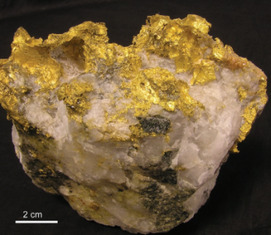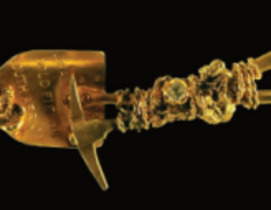The Crystallography, Metallography and Composition of Gold
Gold is an element, a metal and a mineral. In nature, gold most commonly occurs as an alloy with silver and, more rarely, with palladium, mercury and copper, and ranges in size from nanoparticles to nuggets weighing 70 kg. Crystallography, metallography and composition control the colour of the alloy, how it will deform, how it will behave at high temperature and how it reacts. These properties offer insights into how gold deposits have formed and been altered, whether under hydrothermal or Earth-surface conditions.
The Crystallography, Metallography and Composition of Gold Read More »



